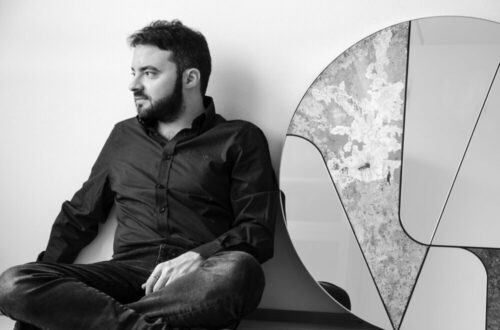Kouka, a Franco-Congolese painter, will be among the major artists featured on SINGULART’s charity sale in partnership with AMREF held from May 9 to the 16. We’re proud to announce that he is happy to support our auction motto: Buy Art Spread Love!
AMREF is an African NGO founded in Kenya in 1957, which advocates for equitable access to health and care with priority given to women and children. Selected and committed artists have chosen to participate in this auction on Singulart’s live section to support this cause.
In this interview, KOUKA will lead us through what drives his creativity and commitment to AMREF.
Kouka, how did you realise that you wanted to become an artist?
Coming from a family of artists, I was lucky enough to never perceive art as a profession or as something sacred, to which one would have access only by chance or thanks to a particular talent that would have been transmitted to us as if by magic. I have always practised music and painting in a very intuitive way without asking myself whether I would one day make a living of it. When I started to confront the world of work, I was lucky enough to meet a guidance counsellor who believed in me. She pushed me to work on my paintings and to go to galleries to show them my work. Before that meeting, no one had ever taken what I was doing seriously.
What inspires and drives your creativity?
I am someone who reads very little. Most of what drives my creative process are images. Since I was very young, I have been fascinated by icons, photo books and old postcards. Generally, the inspiration comes from an image that questions me and of which I try to understand the meaning, the beauty or what speaks to me in it. Painting an image that inspires me is a way of going deep into the meaning of it. When I paint in the street or exhibit in a gallery, the way people look at that image allows me to learn more about the world.
Kouka, how did the figure of the Bantu warrior come about? What is the significance of the Bantu totem pole on sale at our charity auction?
The figure of the Bantu Warrior was born during a trip to sub-Saharan Africa in 2008. During my urban explorations, I discovered a majestic place, abandoned. It was the International Centre of Bantu Civilizations in Libreville, an aborted project that served as a training camp for the French military in the Gabonese capital. I then decided to paint this character with an assegai in the idea that this “Bantu Warrior” would interact with the French military to claim his belonging to this territory. From this contextual intervention, a series of works were born, which has been going on for more than 10 years throughout the world, in response to all the areas occupied in a more or less legitimate way.
Could you tell us more about your involvement with AMREF?
I met AMREF in 2014, when I sold the windows I had painted on the façade of the current Hôtel Renaissance République in Paris. My ambition was for my work to serve a cause that was close to my heart and the training of midwives in Africa to combat the high rate of post-natal mortality seemed to me to be the best way to give meaning to my work. The 46,000€ raised during this charity sale benefited AMREF’s actions and I am very happy about that.
Since then, I continue to follow their actions throughout the African continent.
Is an artist a social agitator? By taking over public spaces with your artistic creations, what message do you carry?
I believe that the artist is the one who moves invisible lines, the one that no one imagined could be moved other than by force. The message I cultivate is that of a deep belief in Man in harmony with his environment. My conviction is that each of our actions have a direct impact on the world. By creating works that transcend the ephemeral and futile nature of our lives, my goal is to show the world that we can interact with our environment in ways other than through its exploitation. In this way, I offer an alternative to the short-termist vision of Man ruling the World and I pass this on to future generations. For me, this is the ultimate goal of art. If art is reduced to its decorative function and is devoid of this commitment, then it has no place and artists are no more than advertising decorators.














